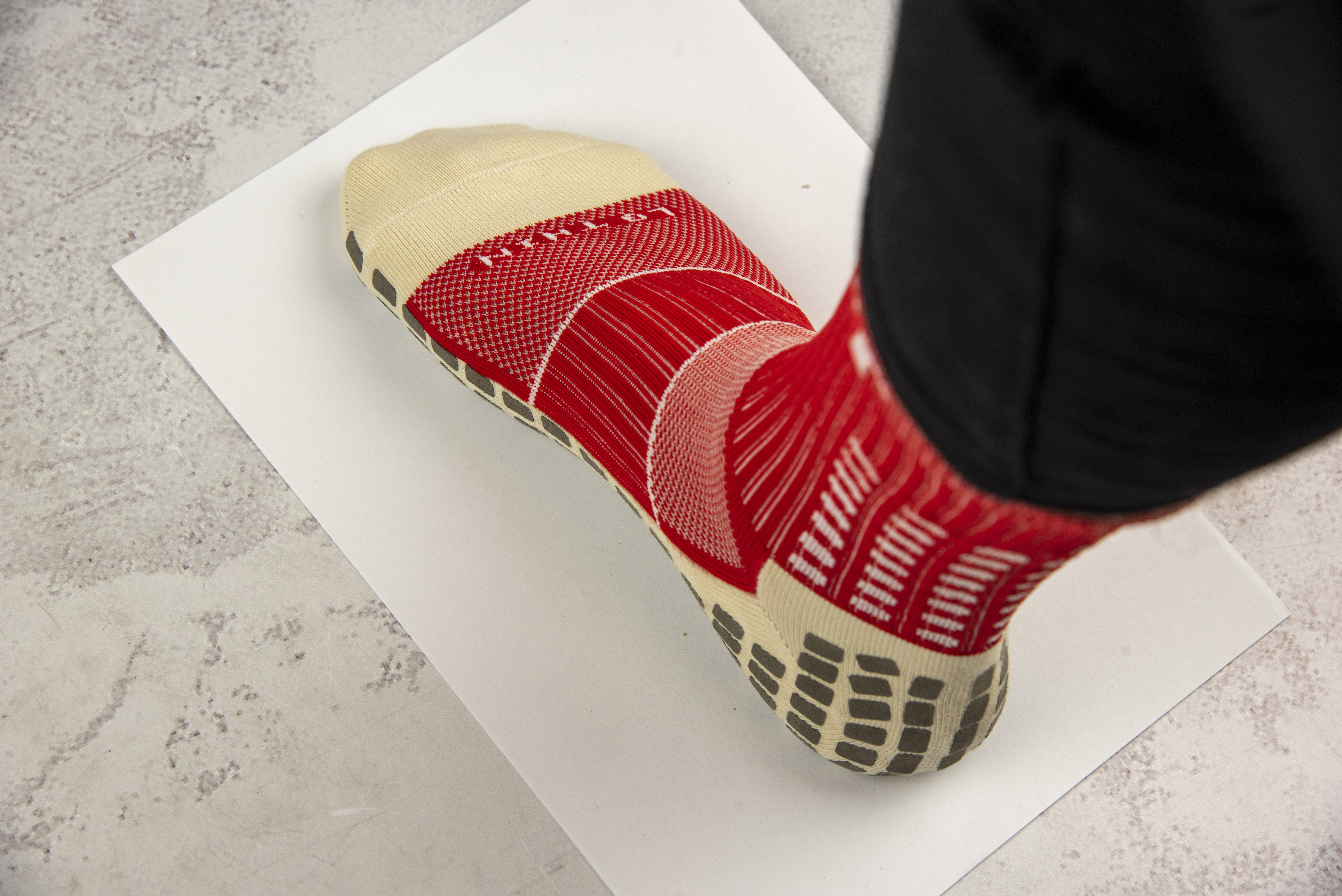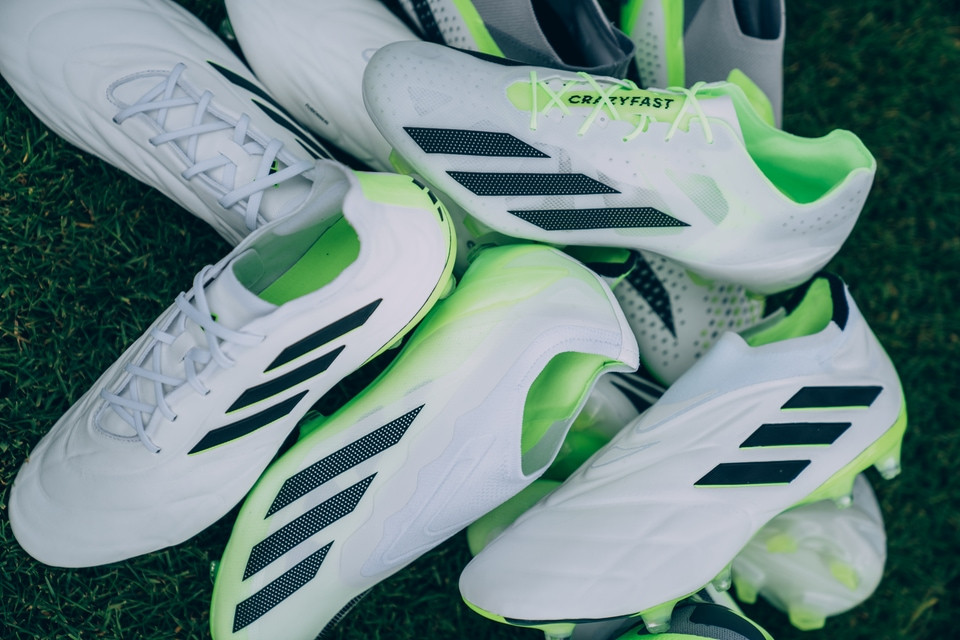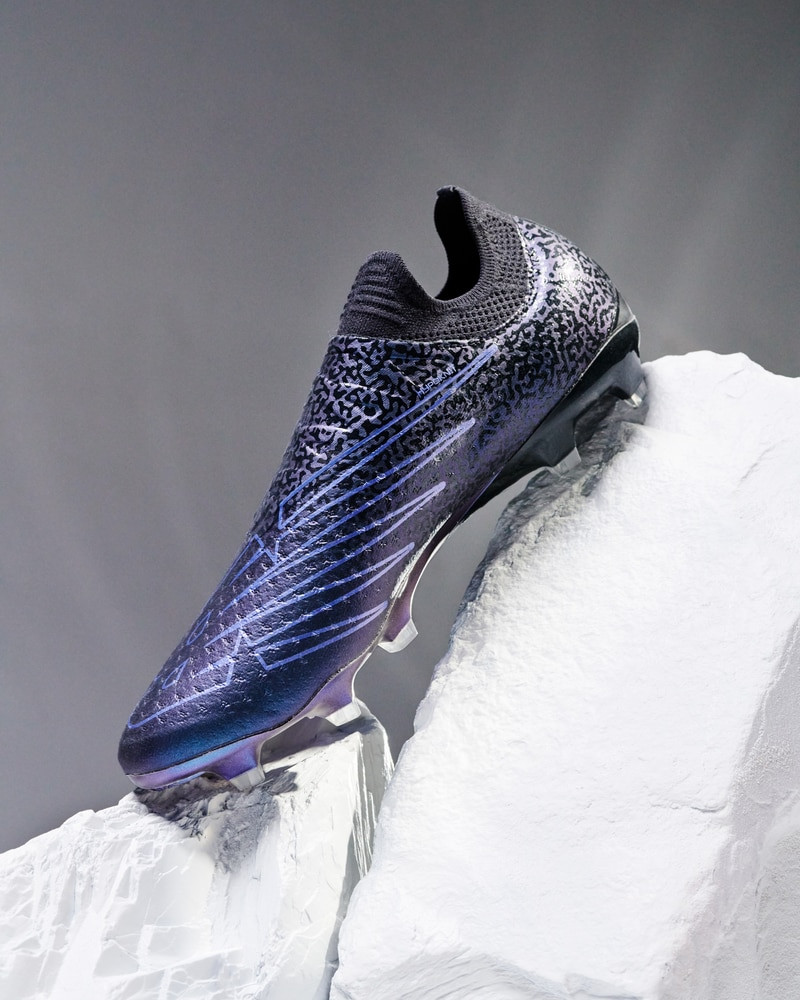Are your football boots too snug or too loose? Finding the right fit is crucial for performance and comfort on the field. This guide, brought to you by CAUHOI2025.UK.COM, will walk you through how to determine the ideal tightness for your football boots, ensuring you play your best. Discover the secrets to a perfect fit and elevate your game today! We’ll explore measuring techniques, material considerations, and brand-specific sizing, helping you avoid common pitfalls and make informed decisions.
Here’s what you’ll learn:
- How to correctly measure your feet for football boots.
- The importance of material when determining tightness.
- Tips for trying on football boots and ensuring a comfortable fit.
- What to do if your football boots don’t fit properly.
1. Understanding the Importance of a Proper Fit
Wearing football boots that fit correctly is essential for several reasons. Ill-fitting boots can lead to discomfort, blisters, and even injuries. The right fit enhances your performance by providing better support, stability, and feel for the ball.
- Enhanced Performance: Properly fitted boots allow for better agility and responsiveness, enabling quicker turns and more precise movements on the field.
- Injury Prevention: Boots that are too tight can restrict blood flow, while boots that are too loose can cause instability, increasing the risk of ankle sprains and other injuries.
- Comfort: A comfortable fit allows you to focus on the game without being distracted by foot pain or discomfort.
2. How to Measure Your Feet Accurately
Accurate measurements are the foundation of finding the right size. Measure your feet in the afternoon, as they tend to swell throughout the day. Wear the socks you typically use for playing football during the measuring process.
2.1. Step-by-Step Measuring Guide
- Prepare Your Materials: You’ll need a piece of paper larger than your foot, a pencil, and a ruler or measuring tape.
- Trace Your Foot: Place the paper on a hard surface and step onto it, wearing your football socks. Have someone trace the outline of your foot, holding the pencil vertically. If you’re doing it yourself, ensure the pencil remains perpendicular to the paper for an accurate tracing.
- Measure the Length: Use the ruler or measuring tape to measure the distance from the heel to the longest toe in centimeters or inches.
- Measure Both Feet: Repeat the process for the other foot, as one foot may be slightly larger than the other. Use the larger measurement as your guide.
- Add Extra Space (If Necessary): Depending on your preference and the boot material, you might want to add a few millimeters (or a fraction of an inch) to the measurement.
 Foot in sock on clean paper
Foot in sock on clean paper
2.2. Key Considerations While Measuring
- Wear Football Socks: Always measure your feet while wearing the socks you intend to use with your football boots.
- Measure at the Right Time: As mentioned earlier, measure your feet in the afternoon or evening when they are at their largest.
- Get Assistance: If possible, have someone help you trace your foot to ensure accuracy.
- Account for Socks: When measuring, make sure you are wearing the type of socks you would normally wear when playing football. According to a study by the American Academy of Orthopaedic Surgeons, proper footwear and socks can significantly reduce the risk of foot injuries.
3. Understanding Football Boot Sizing
Football boot sizes can vary between brands, so it’s important to consult the specific sizing chart for the brand you’re considering.
3.1. Using Sizing Charts
Most online retailers and manufacturers provide sizing charts that correlate foot length to boot size. These charts typically include UK, US, and European sizes, as well as the corresponding foot length in centimeters or inches.
3.2. Brand-Specific Sizing Differences
Different brands may have slight variations in their sizing. For example, Nike might fit slightly differently than Adidas or Puma. Always refer to the brand’s specific sizing chart for the most accurate fit.
3.3. Converting Sizes
If you’re used to a particular sizing system (e.g., US sizes) and need to convert to another (e.g., UK sizes), use a reliable conversion chart. Be aware that conversions may not always be exact, so it’s best to measure your foot length and compare it to the brand’s sizing chart.
4. How Tight Should Your Football Boots Be?
The ideal tightness for football boots is snug but not restrictive. Your toes should have some wiggle room, but your foot should not slide around inside the boot.
4.1. General Guidelines
- Snug Fit: The boots should feel snug around your foot, providing support and stability.
- Toe Room: There should be a small amount of space (around 4-8 millimeters) between your longest toe and the end of the boot.
- No Slipping: Your heel should not slip out of the boot when you walk or run.
4.2. Considering the Material
The material of your football boots plays a significant role in how they will fit over time.
- Leather Boots: Leather boots tend to stretch and mold to the shape of your foot. They should feel snug when you first try them on, as they will likely loosen up with wear.
- Synthetic Boots: Synthetic materials generally don’t stretch as much as leather. Therefore, synthetic boots should fit comfortably from the start, with the appropriate amount of toe room.
According to a study by the Journal of Sports Science and Medicine, the material of the shoe significantly impacts comfort and performance.
4.3. Lace vs. Laceless Boots
- Laced Boots: Laced boots offer more adjustability, allowing you to customize the tightness to your preference.
- Laceless Boots: Laceless boots provide a snug, sock-like fit but offer less adjustability. It’s crucial to ensure laceless boots fit well from the start, as you won’t be able to tighten or loosen them.
4.4. Additional Tips for Trying on Boots
When trying on football boots, keep the following tips in mind:
- Try Them On Properly: Walk, run, and jump in the boots to ensure they feel comfortable and secure.
- Wear Them Around the House: Before wearing the boots on the field, wear them around the house for an hour or so to break them in and identify any potential discomfort.
- Consider the Socks: Make sure you’re wearing the socks you would normally wear when playing football.
- Trust Your Instincts: If the boots don’t feel right, try a different size or model.
5. Factors Affecting the Correct Size Selection
Several factors can influence the correct size selection for football boots.
5.1. Foot Shape and Width
Foot shape and width can significantly impact the fit of football boots. If you have wide feet, you may need to look for boots specifically designed for wider feet.
- Wide Feet: Boots with a wider toe box and more volume can accommodate wider feet comfortably. Look for models like Nike Phantom GX, Puma Future, Nike Tiempo, Adidas Predator Accuracy, Adidas Copa Mundial, Mizuno Morelia, and New Balance Furon V7.
- Narrow Feet: Boots with a snug fit and a narrower profile may be more suitable for narrow feet.
5.2. Playing Position
Your playing position can also influence your choice of football boots.
- Attackers: May prefer lightweight boots with a snug fit for enhanced speed and agility.
- Defenders: May prefer boots with more protection and stability for tackling and defending.
- Midfielders: May prefer a balance of both, with boots that offer both comfort and performance.
5.3. Field Conditions
The type of surface you play on (e.g., grass, artificial turf) can affect the type of boots you choose. Different soleplates are designed for different surfaces, and the fit may vary slightly depending on the soleplate.
6. What to Do If Your Football Boots Don’t Fit
If your football boots don’t fit properly, don’t despair. You have several options.
6.1. Returning or Exchanging Boots
Most retailers have a return or exchange policy, allowing you to return or exchange boots that don’t fit. Make sure to check the retailer’s policy before making a purchase.
6.2. Stretching Leather Boots
If your leather boots are too tight, you may be able to stretch them slightly.
6.3. Seeking Professional Advice
If you’re unsure about the fit of your football boots, consider seeking professional advice from a podiatrist or a knowledgeable salesperson at a specialty sports store.
7. Football Boots for Kids
Choosing the right size for children’s football boots requires special attention. Children’s feet grow quickly, so it’s important to measure their feet regularly and choose boots that fit well at the time of purchase.
7.1. Measuring Children’s Feet
Measure your child’s feet regularly, following the same steps outlined earlier in this guide.
7.2. Allowing for Growth
While it’s tempting to buy boots that are too big to allow for growth, it’s important to choose boots that fit well now. Boots that are too large can cause discomfort and increase the risk of injury.
7.3. Consulting with Experts
Consult with a podiatrist or a knowledgeable salesperson at a specialty sports store for advice on choosing the right size and fit for your child’s football boots.
8. Conclusion: Finding the Perfect Fit
Finding the perfect fit for your football boots is essential for performance, comfort, and injury prevention. By following the tips and guidelines in this guide, you can confidently choose boots that fit well and enhance your game. Remember to measure your feet accurately, consider the material and brand of the boots, and try them on properly before making a purchase.
At CAUHOI2025.UK.COM, we understand the importance of finding the right information. That’s why we strive to provide clear, concise, and reliable answers to all your questions. If you have more questions or need further assistance, don’t hesitate to reach out.
Take Action Today!
Don’t let ill-fitting football boots hold you back. Visit CauHoi2025.UK.COM today to explore more articles, ask questions, or seek expert advice. Your perfect fit awaits!
FAQ: Frequently Asked Questions
Q1: How often should I measure my feet for football boots?
Measure your feet at least once a year, or more frequently if you notice a change in shoe size or foot shape.
Q2: Can I wear thick socks to make my football boots fit tighter?
Wearing thick socks can help to fill out loose-fitting boots, but it’s generally better to choose boots that fit properly with your usual football socks.
Q3: What if my feet are different sizes?
Choose the size that fits your larger foot. You can use inserts or padding to improve the fit of the boot on your smaller foot.
Q4: Do leather football boots stretch over time?
Yes, leather football boots tend to stretch and mold to the shape of your foot.
Q5: How do I know if my football boots are too tight?
If your toes are cramped, your feet feel numb, or you experience pain or discomfort, your boots are likely too tight.
Q6: Can I use a shoe stretcher to stretch my football boots?
Yes, you can use a shoe stretcher to stretch leather football boots. However, use caution and follow the manufacturer’s instructions to avoid damaging the boots.
Q7: Are there specific football boots for wide feet?
Yes, several brands offer football boots specifically designed for wide feet. Look for models with a wider toe box and more volume.
Q8: What is the best way to break in new football boots?
Wear the boots around the house for short periods, gradually increasing the wear time. You can also use a leather conditioner to soften the leather.
Q9: How do I clean my football boots?
Clean your football boots with a soft brush and mild soap and water. Allow them to air dry away from direct heat.
Q10: Where can I find reliable sizing charts for football boots?
You can find sizing charts on the websites of major sports retailers and manufacturers.
 laceless
laceless _
_